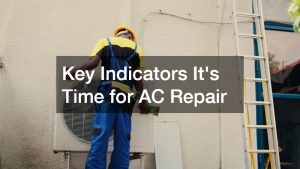Government shutdowns in the United States have happened on several occasions since 1980. This happens when the federal government cannot agree on a budget for the next year, leading to an impasse. During this time, the government “furloughs” or puts its non-essential government workers on indefinite temporary leave until they can agree on a budget. The latest one happened between 2018 and 2019, when Democrats rejected the $5.7 billion allocation on a wall along the Mexican border.
It was the longest shutdown in US history. The shutdown had 380,000 federal employees furloughed and 420,000 employees working without assurance of pay. Not only did it affect the employees, but also the American public who needed services that were deemed non-essential. This included subsidized grocery stores for military families, programs for military veterans, and low-income janitors and security guards working in federal buildings.
But plenty of people seem to have forgotten one sector that’s affected: the public school teachers. Out of 56.6 million students from elementary to high school, 50.8 million attend public school. Although they are mostly considered local government employees, their employment has actually been affected by the shutdown, and has affected almost 90 percent of the country’s student population.
Do Public School Teachers Get Paid During Government Shutdown?
It’s often easy to forget the fact that public school teachers are federal government employees, in a way. Public schools pay its faculty and the rest of its staff (janitors, cafeteria workers, etc.) from a mixture of federal, state, and local taxes, as well as funding from other government and non-government agencies, depending on their state. In comparison, private school teachers work for private companies; private schools pay their teachers with students’ tuition fees.
Because only a percentage of their salary comes from federal funding, it’s highly unlikely that public schools will be shut down during another government shutdown. Because a school year (which starts at August or September and ends in May or June) is not the same as a fiscal year, even after the government shutdown begins, there should already be money allocated for school funding before the next fiscal year begins.
However, if a shutdown lasts long enough, funding might run out for public school teachers. Whether it means that school teachers may receive smaller paychecks until funding resumes. Also, while general elementary to high school isn’t funded by the public, special programs funded by federal funding (e.g. Special Education Programs) may be cut, leading to teachers hired for that program to be furloughed or laid off.
If you or your child studies in one of the 1,200 school districts on federal land (e.g. military children or children living in Native American reservations), their education may stop due to the shutdown. Most of the Department of Education cannot provide assistance to school districts as most of its employees will be furloughed. And federal grants and programs may be put on hold.
A School Teacher’s Salary Cannot Support a Family
The best case scenario of any family during a government shutdown is that all the income earners work in a private company and are unaffected. On the other hand, the worst case scenario would be all income earners in a household classified as non-essential and furloughed.
Public school teachers fall somewhere along that spectrum. A public school teacher makes between $50,000 to $66,500, depending on the state they live in. While this may be barely enough to support one person or a childless couple, it may not be enough to raise a family in certain areas in the US. The federal poverty threshold for a family of three (the average number of members in a household) is $20,780. This is how much the U.S. Department of Health & Human Services believes a household should be making to receive basic needs. But this is not enough: you’ll need roughly $49,000 to stay in the country’s least expensive metropolitan area (Morristown, Tennessee) and up to $98,722 for the most expensive (New York). This is only for basic needs such as rent, utilities, food, transportation, and others.
While a public school teacher’s salary will not be cut during a shutdown, what about school teachers whose household members are non-essential government employee members? Public school teachers are indirectly affected when they cannot support their families as the sole breadwinner of the family. Even more if shutdowns lead to the federal tax percentage of their salary to be cut off.
What About the Students?
The effect of the government shutdown for public school teachers is only either minimal or indirectly. But what about the 50.8 million students who attend public school? Public schools are subsidized by the government, while private schools can cost up to $15,000 per year per child. Not all parents have the ability to pay for it, so what happens to those who rely on public schools for education.
Luckily, most public school students will not be affected as most of schools’ budgets come from local government taxes. However, students studying in federal areas like military bases and Native American reserves will be affected. Eight percent of elementary to secondary education includes federal contribution. These include Special programs subsidized by the Department of Education and lunch programs for students in lower-income households. The shutdown also affects students in post-secondary education who are studying under federal grants and financial aid. The shutdown can also prevent students from accessing their tax return transcripts from the IRS for financial aid applications.
The educational system relies on the federal government to operate. It’s not just the teachers’ jobs that are at stake, but the education of over 50 million American students. So, the next time the government decides on a shutdown for an expensive game of chicken with their funding, they should start thinking about the students who will be affected by a shutdown.
















